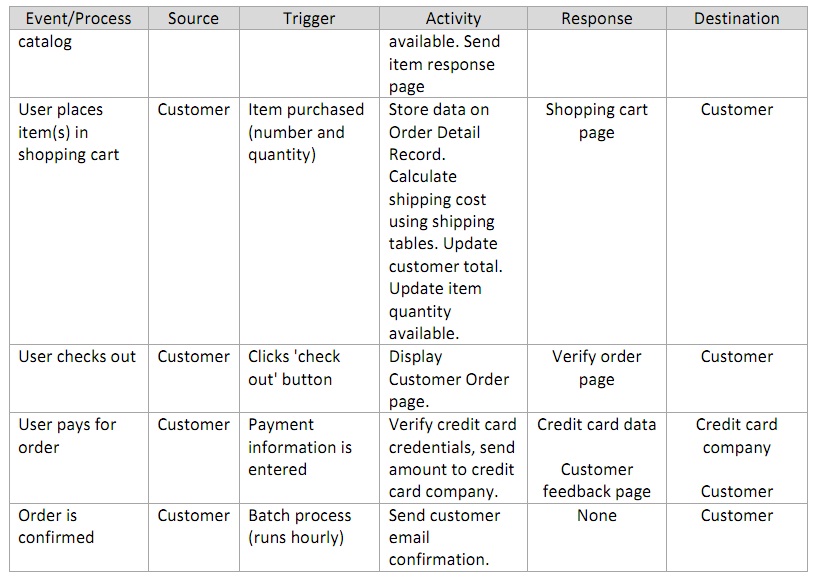It's the day after your long meeting with the new project manager in which you hashed out the basic framework for the project plan and estimates. "Whew," you think to yourself, "I'm glad that's over and we can finally start digging into the details of the systems analysis . . .
Your first scheduled meeting is with one of the marketing managers, whose big concern is loss of flexibility with a COTS product. She explains, "You know, as bad as the present system is, at least we have the flexibility of customizing it any way we want. Yes, I know it's painful for you guys [IT] to jump through all these hoops to make last-minute changes but we can't be 'more like amazon' if we're tied to a product that was not designed for our needs."
You assure her that part of your role as systems analyst is to ensure that this doesn't happen, then add, "Okay, let's see your ideas on 'customer tiers'."
"Sure," she replies, bringing up a document on her screen. "The way we have broken down the business rules for pricing and discounts is based on a Tiered Model of customers; it's part of our new Customer Loyalty Program (CLP). Here's the new structure we've outlined so far."
If a customer is Tier 0 customer (defined as either an existing customer with no orders within the past 12 months or, a new customer), there is no discount on orders up to $499. Above that, a 1.5% discount is automatically added for the first new order.
If a customer is Tier 1 customer (defined as >= 3 orders in the past 90 days or, >$500 in total sales in the past 12 months), they automatically get a 2.0% discount on orders of $500 or more.
If a customer is Tier 2 customer (defined as >= 6 orders in the past 90 days or, >$750 in total sales in the past 12 months), they automatically get a 4.0% discount on orders of $500 or more.
If a customer is Tier 3 customer (defined as >= 9 orders in the past 90 days or, >$1,000 in total sales in the past 12 months), they automatically get a 5.0% discount on orders of $500 or more.
"This doesn't look too complicated" you say, thanking the manager for her time. Your Smartphone beeps that you've got a call in 10 minutes with the Chief Systems Architect.
In the Architect's office you are told, "Here is the event response matrix we got the from ECX; this is the out-of-the-box functionality for basic order entry processing that comes installed."
You quickly scan the table below and say, "Okay, this looks like boilerplate stuff [boilerplate = standard functionality that requires little or no customization]; we'll need to create some diagrams so we can see how the basic workflow and dataflow will be affected when we get the customization requirements from the business."


"Ha! Good luck with getting requirements on-time" says the architect cryptically as he heads off to another meeting.
"Hmm, this is going to be a lot of analytical work if we're going to make this work." you think to yourself. "And we haven't even talked about legacy system integration yet . . ."
Your Systems Analysis tasks are as follows:
Create a Word document (.doc or .docx). All the artifacts listed in the tasks below must be contained in this one file. For those tasks that require creating a diagram, you must paste them into document in their native format, whether you use Visio or another diagramming tool - do not paste as an image.
Question 1: Create a Decision Table for the new customer tier/discount business rules. Create a list of questions for the marketing manager to answer.
Question 2: Create a Level-0 dataflow diagram using the event response table provided. Be sure to start with a list of objects so you don't forget anything. When done, create a list of questions for the database analyst.
Question 3: Create a use case diagram based on the event response matrix.
Question 4: Create a written use case scenario based on the event response matrix.